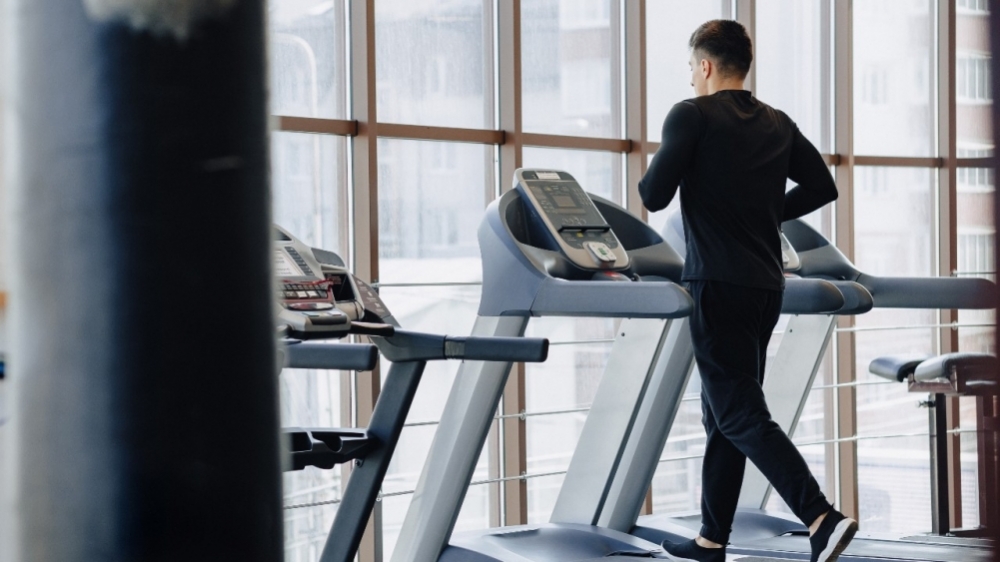


The finding comes from a clinical trial by researchers at the University of São Paulo who recruited 32 male volunteers and have now published the results in Clinical and Experimental Hypertension (image: pressahotkey/Freepik)
Published on 06/20/2022
By Luciana Constantino | Agência FAPESP – Aerobic exercise increases the effectiveness of the drug losartan for patients with high blood pressure, in particular improving autonomic regulation of the heart and contributing to proper functioning of the cardiovascular system. This is one of the main findings of a study involving male volunteers conducted at the University of São Paulo’s Ribeirão Preto Medical School (FMRP-USP) in Brazil.
The researchers showed that walking for 45 minutes three times a week improved heart rate variability, a scientifically validated parameter to assess the functioning of the autonomic nervous system, which regulates blood pressure and breathing, among other physiological processes.
Losartan is an angiotensin II type 1 (AT1) receptor blocker and is considered the first line of treatment for hypertension to reduce the risk of cardiovascular events, as well as preventing heart failure and protect the kidneys. Angiotensin II is a peptide that contracts the small-diameter blood vessels (arterioles) and raises blood pressure.
According to an article on the study published in the journal Clinical and Experimental Hypertension, losartan can lower arterial blood pressure to normal levels, but autonomic heart control remains very weak unless administration of the drug is combined with regular physical exercise.
“Heart rate variability wasn’t restored adequately by the drug alone. An interesting observation was that patients who were treated with losartan had less heart rate variability than those who weren’t. This means regulation of blood pumping by the cardiovascular system wasn’t at the right level. It’s necessary and indispensable to lower blood pressure, but the drug isn’t sufficient on its own. Its effects are complemented by exercise,” said Hugo Celso Dutra de Souza, a professor at FMRP-USP and corresponding author of the article.
The study was supported by FAPESP. The first author of the article is Tábata de Paula Facioli, formerly affiliated with FMRP-USP’s Physical Therapy and Cardiovascular Physiology Laboratory (Laphy-Carphy), where Souza is principal investigator.
Cases
According to a survey of global trends in hypertension prevalence, detection, treatment and control led by Imperial College London and the World Health Organization (WHO), the number of hypertensive adults aged 30-79 worldwide practically doubled from 650 million to 1.28 billion in the last 30 years. Almost half of these people did not know they had high blood pressure at the time they were interviewed. In Brazil, about 30% of adults are hypertensive, according to the Brazilian Society of Cardiology (SBC).
High blood pressure increases the risk of heart, brain and kidney disease, and is one of the leading causes of death and disease globally. It is easily detected at home or at a health center, and in many cases can be treated effectively with inexpensive drugs, such as losartan, enalapril, hydrochlorothiazide, propranolol and amlodipine.
Previous research by Souza and his group, also supported by FAPESP, investigated heart rate variability in an animal model, as reported in an article published in 2015. “The study involved spontaneously hypertensive rats [SHR] and was designed to find out whether aerobic exercise could be beneficially combined with treatment using certain drugs. The results differed widely depending on the drug. Many patients take these medications, so we decided to study them in humans to analyze their effects,” Souza said.
Methods
In the latest study, the researchers recruited 32 men aged 40-60 and divided them into two groups, one with normal blood pressure and the other with hypertension treated with losartan. All participants took a 16-week aerobic training program, before and after which the researchers measured hemodynamic parameters, heart rate variability (HRV), blood pressure, and spontaneous baroreflex sensitivity (SBS, measured in terms of changes in heart rate in response to changes in blood pressure).
Before the training program, hemodynamic parameters were similar for both groups, but SBS was lower for the hypertensive group, as was HRV, characterized by a reduction in sympathetic and vagal modulation.
Resting heart rate fell after exercise in both groups, but the hypertensive group also displayed a fall in blood pressure and sympathetic modulation, a rise in vagal modulation and SBS, and lower HRV than the group with normal blood pressure.
The autonomic nervous system controls involuntary bodily processes via two branches, the sympathetic and parasympathetic (or vagal). They may sometimes have opposite effects on the same organ. For example, the sympathetic division raises heart rate while the parasympathetic lowers it. Together they ensure that the body responds appropriately to different situations, such as stress.
The autonomic nervous system functions differently in men and women, mainly owing to the ovarian hormones, and the research group therefore opted for separate studies by biological sex. “The study involving women is ongoing and should be completed soon,” Souza said. “We’ve already seen interesting results, especially in comparing the effects of hypertension before and after menopause.”
The researchers are also working on an article that will compare and contrast the effects of losartan and enalapril. Losartan blocks the AT1 receptor, while enalapril inhibits the angiotensin-converting enzyme (ACE). “Physical exercise is important and has been seen as a kind of magic pill, but we need to understand exactly what it does to the organism so that one day we can perhaps try to simulate its effects pharmacologically,” Souza said.
The article “Combined effects of angiotensin receptor blocker use and physical training in hypertensive men” by Tábata de Paula Facioli, Stella Vieira Philbois, Bruno Augusto Aguilar, Ana Catarine Veiga and Hugo Celso Dutra de Souza is at: www.tandfonline.com/doi/full/10.1080/10641963.2022.2055763.
Image of pressahotkey on Freepik
Source: https://agencia.fapesp.br/38926